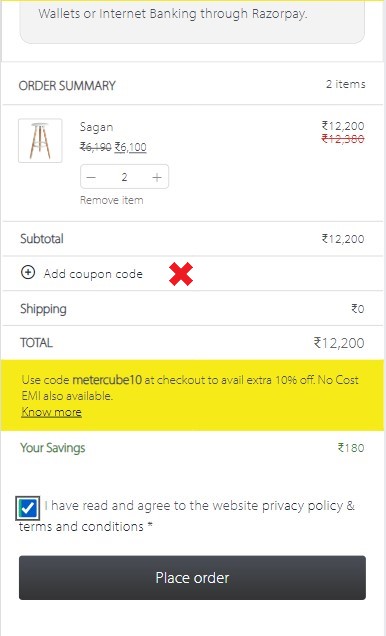
- 17 Characteristics of Glass, Wood, and Metal Coffee Tables
- Glass Coffee Tables
- Wood Coffee Tables
- Styles of Wood Coffee Tables:
- Wood Types and Characteristics:
- Finishes and Their Impacts:
- Eco-Friendly and Sustainable:
- Easy to Customise and Refinish:
- Metal Coffee Tables
- Robust Durability:
- Contemporary and Industrial Styles:
- Low Maintenance:
- Versatility in Design:
- Lightweight Options:
- Integration with Other Materials:
- Weather Resistance:
- Conclusion
Have you ever found yourself staring at the space in your living room, puzzled over which type of coffee table would best complete the scene? Choosing the perfect centrepiece for your living area isn’t just about filling space. It is about designing a spot that brings comfort, functionality, and aesthetic appeal to your daily life.
Whether you are redecorating your first home or upgrading your current setup, the decision often comes down to three popular materials: glass, wood, and metal. Each brings its unique flair and set of benefits, but how do you decide which one is right for you? In this blog, we will dive deep into the characteristics of these coffee tables, to help you determine which material best suits your living space and lifestyle.
17 Characteristics of Glass, Wood, and Metal Coffee Tables
Glass Coffee Tables
-
Safety First:
Always use tempered glass when selecting a glass coffee table, as the treatment that it undergoes enhances its strength and safety features. If tempered glass breaks, it fractures into small, blunt fragments that pose lesser risk of injury, in contrast to ordinary glass that can shatter into sharp, dangerous shards. In households with children, pets, or seniors, tables with rounded edges can minimise the risk of injury from sharp corners.
-
Glass Coffee Table Styling Choices:
Traditional styles may have a more classic look, with glass tops supported by ornate wooden or wrought iron bases. For those drawn to industrial aesthetics, glass coffee tables can incorporate sturdy, visible metal frames, embracing a raw, stripped-back vibe. In glamorous settings, glass tables are typically paired with polished metallic structures, often adorned with sparkling or intricate detailing to create a luxurious focal point.
-
Size and Proportions:
Make sure the table fits well within the scale of your room and seating arrangement. A practical guideline when selecting a coffee table is to opt for one that measures roughly two-thirds the length of your sofa. This ensures it complements the scale of your seating area while still allowing ease of movement around the room. Additionally, the optimal height for a coffee table is usually about 1-2 inches lesser than the seat height of your sofa, making it conveniently accessible and comfortable to use from your couch.
-
Functionality and Use:
Reflect on how you will use the coffee table. A simple glass top might suffice if it is primarily for decorative purposes. However, if you plan to use it regularly for serving drinks or meals, look for a sturdier design or one with a secondary shelf for extra stability and storage. Glass is very easy to wipe, making it an excellent choice for homes that value ease of cleaning. Use coasters to prevent rings and maintain the pristine appearance of the glass.
-
Style and Decor:
Since glass is versatile, choose a base that complements the rest of your furniture. Metal bases can add a modern touch, wooden bases can bring warmth and a rustic feel, and clear acrylic bases can create a sense of more open space. Glass coffee tables are handy in smaller or darker rooms because they do not obstruct views or light, helping the space feel larger and brighter.
Wood Coffee Tables
-
Styles of Wood Coffee Tables:
Traditional styles often feature intricate carvings, rich stains, and ornate detailing – making them perfect for classic decor. On the other hand, modern wood coffee tables favour clean lines & minimalistic designs, and sometimes incorporate mixed materials like glass or metal for a sleek, contemporary look. Rustic styles highlight wood’s raw, natural beauty with rugged surfaces and a more natural finish.
-
Wood Types and Characteristics:
Hardwoods like oak, maple, and walnut are durable and can bear the weight of heavy items. These woods are typically used in furniture that is meant to last and can handle daily wear & tear. Softwoods such as pine and cedar are lighter and more affordable options, though they tend to be more susceptible to dents and scratches. Consequently, tables made from these materials are best suited for areas with lesser traffic or environments where furniture is updated more frequently.
-
Finishes and Their Impacts:
Varnished or Lacquered finishes provides a glossy or semi-gloss impact that enhances the colour and grain of the wood, while offering protection against spills and stains. Oiled or Waxed finishes give a more natural look and bring out the depth of the wood grain. They require more maintenance, as reapplication is necessary to maintain protection. Wood tables can be painted any colour to match decor themes. Paint provides a protective coating and can be a good way to refurbish or update an older table.
-
Eco-Friendly and Sustainable:
With an increasing focus on sustainability, wood emerges as an environmentally friendly choice, mainly when sourced responsibly. Wood is a renewable resource, and purchasing coffee tables made from reclaimed or sustainably harvested wood can reduce your environmental impact. Additionally, wood’s durability means it doesn’t need to be replaced as frequently as other materials, leading to lesser waste.
-
Easy to Customise and Refinish:
Wood coffee tables can be easily sanded and refinished, which is not an option with glass or metal tables. If the original finish becomes scratched or outdated, you can refinish the wood to give it a new look. This adaptability also allows for customising stains, paints, and finishes to match evolving decor trends or personal taste changes.
Metal Coffee Tables
-
Robust Durability:
Metal is inherently strong and durable, making it an ideal material for furniture that needs to withstand daily use. Metal coffee tables can handle heavy objects, resist damage from knocks and bumps, and maintain their integrity over many years. The robustness of metal makes it an excellent choice for high-traffic areas or households with pets and children, where durability is a key concern.
-
Contemporary and Industrial Styles:
Metal coffee tables excel in modern, industrial, and minimalist decor schemes. They can be designed with sleek lines and metallic finishes that reflect light and add a touch of sophistication to any space. Whether brushed nickel, stainless steel, or wrought iron, the range of finishes allows metal coffee tables to make bold or subtle style statements.
-
Low Maintenance:
Unlike wood, which may require regular treatments and can be sensitive to scratches and moisture, metal coffee tables are relatively low maintenance. They typically need just a simple wipe-down to keep them looking new. Moreover, they aren’t prone to issues like staining or warping, which can affect other materials.
-
Versatility in Design:
Metal can be manipulated into virtually any shape or design, allowing for creative and intricate patterns that might not be possible with other materials. From intricate latticework to simple, angular contemporary designs, metal offers a breadth of stylistic versatility that can cater to any taste or home design.
-
Lightweight Options:
While metal can be heavy, there are lightweight alternatives such as aluminium that are easy to move and rearrange. This can be particularly useful for those who like updating their room layouts frequently or using multipurpose spaces.
-
Integration with Other Materials:
Metal coffee tables often incorporate other materials like glass, wood, or stone, creating a composite piece that blends the best attributes of each. For instance, a metal frame with glass top offers a durable structure with a clear, light surface that doesn’t overwhelm a space. This ability to integrate seamlessly with other materials enhances the metal coffee table’s functionality and aesthetic appeal.
-
Weather Resistance:
Given its resistance to many environmental elements, metal is also a good choice for outdoor spaces. Treated metals can resist rust and corrosion, making metal coffee tables suitable for patios or balconies – expanding their usability beyond indoor settings.
Conclusion
Each material has its advantages, whether it is the ease of maintenance with glass, the robust character of wood, or the versatile design possibilities of metal. Your choice should align with both your practical needs and your stylistic preferences.
Reflect on your living room‘s current layout, lifestyle, and decor to ensure that your new coffee table isn’t just a functional piece but a centrepiece that enhances the beauty and functionality of your home. By weighing these considerations, you can make an informed decision that balances beauty with utility – making your living room a harmonious blend of form and function.







